In April this year, just following the last of the industry announcements from Watches & Wonders, Patek Philippe announced their novelty releases for the year. Amongst them, a new release of Calatrava which caught my eye – reference 6119. There were two particular points of note for this release – firstly it comes in a slightly larger 39mm diameter, and secondly it houses a completely new, hand-wound movement to go with it.
However, before taking a look at the 6119, I wanted to give a quick overview of the Calatrava collection to understand the DNA which makes up the new release.
Patek Philippe Calatrava
The Calatrava collection has been a part of Patek Philippe’s catalogue since 1932, which is the same year that Jean and Charles Henri Stern purchased a controlling stake in the company, then known as Patek, Philippe & Cie.
At the time the Stern brothers bought this interest in the company, it was in financial difficulty, and the Calatrava was their answer to this – a watch which would widen the net in terms of potential clients with a more accessible, conventional timepiece that still bore the quality and name of the brand.
Subsequently released in 1932 was the Calatrava reference 96 – named so after the cross emblem which is today used as the logo of Patek Philippe. The Calatrava reference 96 ultimately served to become perhaps the archetypal dress watch, a minimalist design with no complications inspired by Bauhaus thinking of ‘form follows function’. There are no over-the-top embellishments: just a simple hours, minutes, and small seconds display with baton hour indices.
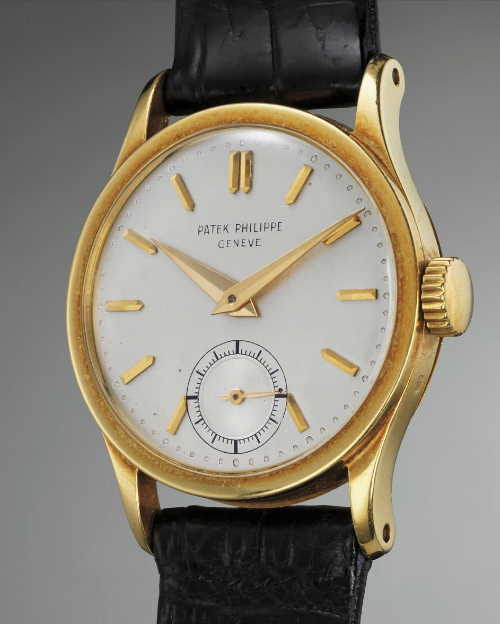
Patek Philippe Calatrava reference 96, photo – www.phillips.com
Interestingly, just 2 years later in 1934, Patek Philippe dipped their metaphorical toe in deviating a little from the Bauhaus principles, introducing a decorative, essentially purposeless embellishment with the introduction of the Clous de Paris (sometimes referred to as ‘hobnail’) guilloche bezel. This was introduced on reference 96D (where the additional D indicates décor).
Notwithstanding its lack of function, the Clous de Paris bezel reappeared in 1973 with reference 3520D. One could make a strong argument that the stunning aesthetic benefits of including it far outweighed its lack of functional purpose. The Clous de Paris was later affirmed as an iconic feature of Calatrava watches in the 1980s with reference 3919.
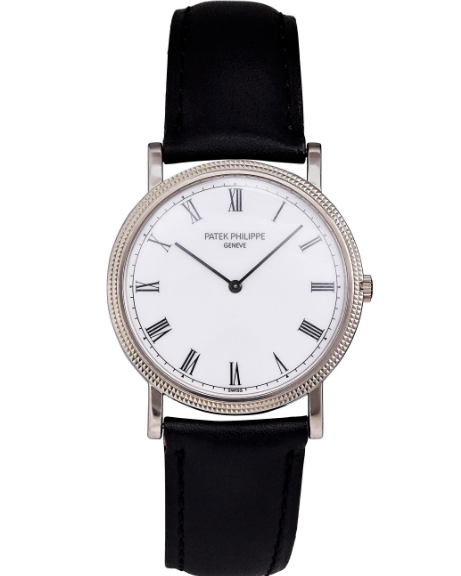
Patek Philippe Calatrava reference 3520D, photo – www.christies.com
It comes as no surprise therefore that the general principles of the design haven’t changed much since 1932, and the successful Calatrava has remained a staple constituent part of the overall Patek Philippe collection ever since. Vintage Calatrava watches still look every bit as great today as when they were first released and remain ever popular amongst collectors, albeit the watches made back them would tend to be slightly smaller than those made today. For instance, the original reference 96 was just 31mm in size.
“Simplicity is difficult” – Thierry Stern
The Calatrava 6119 design harmoniously brings together features of previous favourites including reference 96D, reference 3919, and its successor, reference 5119. Looking at these names, the reference number allocated to the 6119 starts to make more sense, too!
Now, I am not for one moment claiming that this brief synopsis has done the extraordinary history of the Calatrava collection justice whatsoever, but I think it stands to give you a flavour as to the importance of the collection to the brand and what it stands for, ahead of taking a look at the new Calatrava 6119G.
Patek Philippe Calatrava 6119
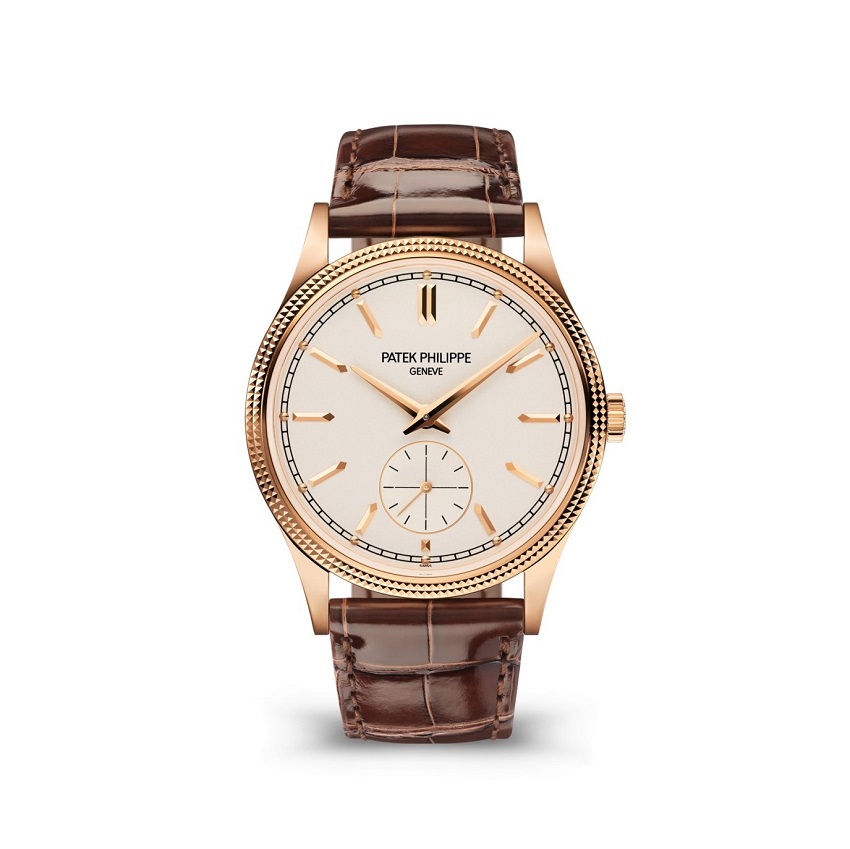
Patek Philippe Calatrava 6119R, photo – Patek Philippe
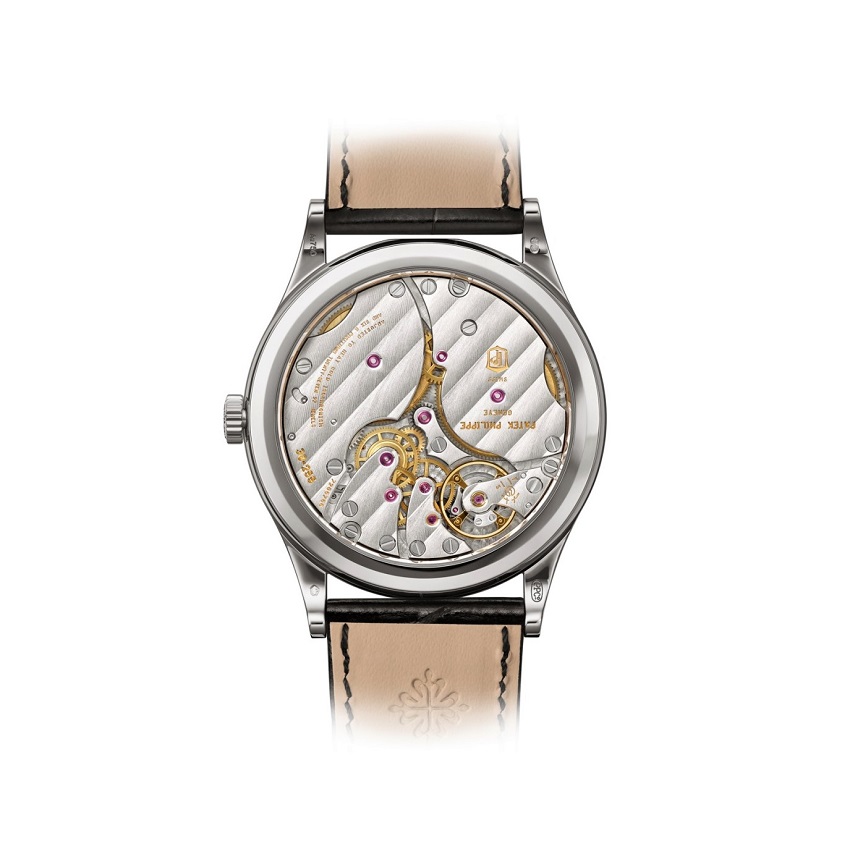
Calibre 30-255 PS, photo – Patek Philippe
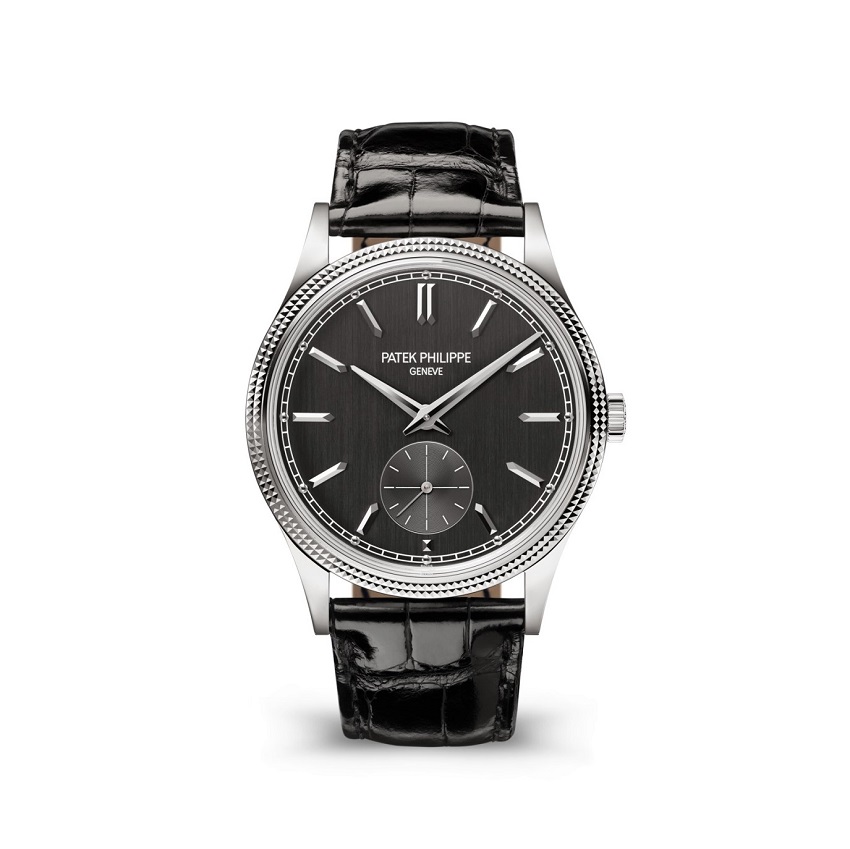
Patek Philippe Calatrava 6119G, photo – Patek Philippe
To date there have been two 6119 references released, the key difference being the case material and associated colourway. The 6119R is cased in rose gold with a grained, white/silver dial, whilst the 6119G is cased in white gold with a vertically brushed charcoal dial.
The case size of the 6119 cases is a slightly larger 39mm diameter than the alternative options available (namely variants of reference 5196), which for me is a key differentiator as these are a slightly smaller 37mm which is a little smaller than I prefer on my own wrist.
However, the definite highlight for me on the case is the inclusion of the Clous de Paris, or hobnail, bezel over a non-decorated, polished one. This guilloche design incorporates two concentric rows of tiny, square-base pyramids which are turned by hand, which I think serves to add a very welcome point of interest to the bezel, bouncing light off of each pyramid face slightly differently for a really eye-catching look without the need for anything like a diamond bezel. For me, it is easy to see why Patek Philippe were happy to step a little out of the Bauhaus principles to include this!

Notice the Clous de Paris, or Hobnail, bezel finish
The crown is adorned with the Calatrava cross, which as I mentioned earlier is the emblem used for Patek Philippe’s logo and has been a relatively common decorative addition to crowns on Patek Philippe watches since the 1960s. I personally think this looks even more elegant when sat in such close proximity to the Clous de Paris bezel.
Looking at the beautiful charcoal dial, the multi-faceted white gold indices are inspired by the original reference 96 Calatrava and accompanied by a small circle to complete each hour marker, which sits as part of an elegant looking railroad minute track around the edge of the dial. The small seconds sub-dial is finished with a concentric snailing design on the 6119G, something which isn’t included on the 6119R.
Combined with the vertical brushing on the dial, all these features create a level of visual intrigue – each time you catch the dial in slightly different lighting, the Clous de Paris, the indices and hands, the dial or the sub-dial will each stand out to varying degrees, which creates a different point of interest to admire.

On the reverse of the watch, we find the new calibre 30-255 PS, which is making its debut in the 6119. With the reverse of the case itself devoid of any markings or inscriptions (excepting the hallmarks on the lugs), there is nothing to distract from admiring the movement at all – and there is a lot to admire. This manual-wind movement offers up to 65 hours power reserve when fully wound owing to the two mainspring barrels contained within it – here they are under the larger plates at the bottom right and left centred on the visible jewels – and it is of course finished to the high standards mandated by the Patek Philippe quality seal.
It also includes a hacking-seconds feature for precision time-setting. That is to say, when the crown is pulled out to set the time, a specific component blocks the balance wheel from oscillating and therefore the seconds hand will stop. This enables you to set the time to an accuracy of one second, rather than just setting the hours and minutes hands in isolation. When you push the crown back in, the balance wheel starts oscillating once again.
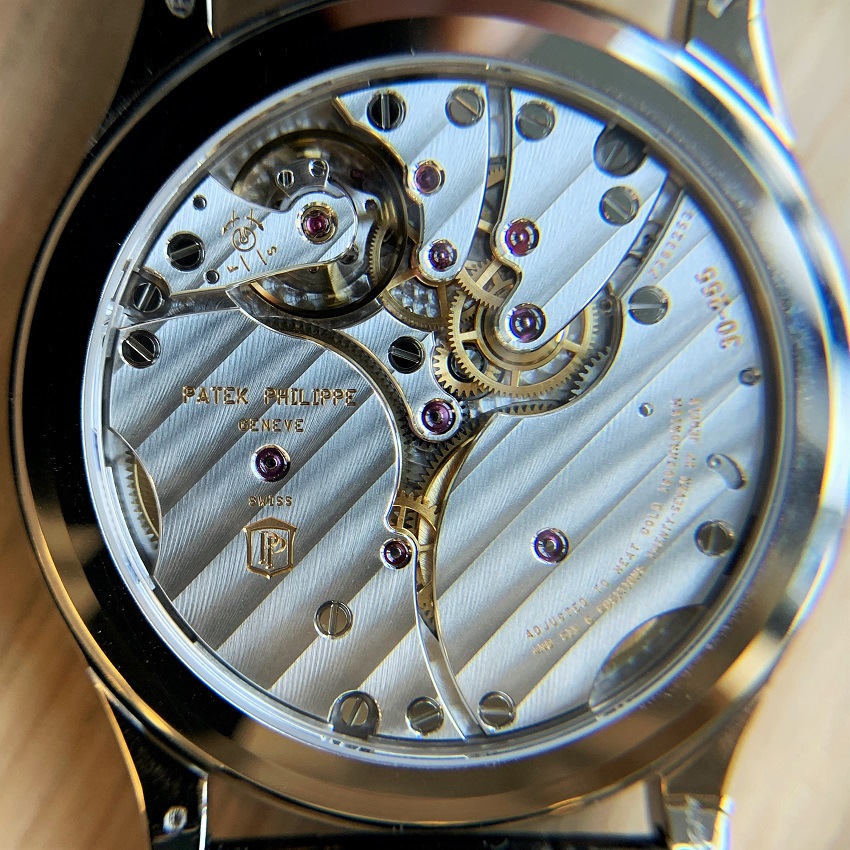
Patek Philippe calibre 30-255 PS
A final, practical point that I think is worth mentioning is the inclusion of quick-release spring-bars! Not something you see every day, but – at least to my mind – is something that we should really see more often than we do. It’s a simple and practical feature which makes a huge difference when changing straps around and avoids spring-bars flying across the room at warp speed, inevitably into areas it is impossible to retrieve them from.
On the wrist, this watch is nothing short of majestic. I simply could not stop looking at my wrist and admiring every tiny detail over and over, and over again. The size at 39mm is perfect for me and felt super comfortable. I would absolutely adore owning one of these watches and it really would be a Patek Philippe that I want to look after for next generation of my own family.

Patek Philippe Calatrava 6119G on the wrist
In Summary
There is a reason Patek Philippe are one of the “holy trinity” manufacturers in watchmaking and are held in the esteem amongst watch collectors that they are. The Calatrava is a fundamental part of Patek Philippe’s history, and the Calatrava 6119 for me is a perfect fusion of this history and the Patek Philippe today, and deserves to be appreciated as such. The Patek Philippe Calatrava 6119 is a truly special watch, and one which I found very difficult to hand back after enjoying my time with it!
If you have any questions, or want to share your thoughts, please get in touch via our Contact page, or via our Instagram.
You might also be interested in:
- What is a Dress Watch?
- Watch Finishing Techniques
- A Watch Aficionado’s Guide to Geneva – Part 1
- Watch Stationery and Gift Ideas
- Watch Books, Watch Boxes and more at the Watch Affinity Shop on Amazon (commissions earned)
As an Amazon Associate, I earn from qualifying purchases – thank you for your support

